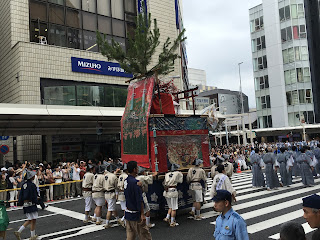I just returned to civilization after a 6-day, 80-mile hike
with an old friend around the stunning Three Sisters Mountains in Oregon. That’s
where I discovered The Hiker Mindset. And I wonder if you have it too?
Day One of the hike was challenging. My body wasn’t used to
humping a 40-pound pack for ten miles up meandering climbs and over dusty
trails. My left shoulder ached. My feet complained. Day Two was even harder, as
we pushed for 15 miles. On Day Three, we left our heavy packs in the tent and,
with just some water and snacks, climbed to the summits of Broken Top and South
Sister, two intimidating mountains with outrageous views.
Those efforts took us 11 hours, and although I came into camp that night bone tired, the thrilling memory of standing on top of the world twice in one day made the exhaustion worth it. As the trip went on, I found myself falling asleep earlier each night. On the final evening, I was snoozing even before the sun went down.
Throughout the hike, we sometimes encountered young, fit men
bounding along the trail carrying 50 pound packs without apparent trouble. We
met pudgy plodders puffing away as their bellies jiggled with each step; gritty
couples sharing a love of nature, physical exertion and one another; gray and
wrinkled old timers eager to stop for a while and share their knowledge of the
land; determined single women inspired by “Wild,” Cheryl Strayed’s famous book
about her solo hiking adventure on the Pacific Crest Trail (PCT); a few hardy families
with children bounding their way over rocky trails; and even dogs carrying
their own supplies in pouches draped over their backs. Some of the people we
met were day hikers planning to return to their cars before the sun went down.
Some, like my friend and me, were hiking the circumference of the Three Sisters
over a week, and some were “through hikers,” rugged souls out on the PCT for
weeks or months.
I began to notice some similarities in the people we encountered
on the trail, something I’ve decided to call The Hiker Mindset:
- A genuine awe at nature, often marveling at the
simple beauty around them: “Can you believe how lucky we are to be out in this
gorgeous part of the world?”
- A smile and nod to strangers, a willingness
to talk, share knowledge and offer help if requested.
- The knowledge that discomfort is part of the
deal. If you hike all day with a heavy pack, your body will ache, your feet
will get sore, your fingernails dirty, and your shoulders stiff.
- A recognition, counterintuitive to many, that you
actually get stronger with each passing day. Over time, your feet will toughen
up, your shoulders will get used to the heavy pack, and your aches will
amazingly start to disappear.

Our hike ended, and my friend and I drove back into town. Our
phones suddenly buzzed with texts and emails that hadn’t been allowed into the
wilderness. Before I started the “sorry for my delayed response” emails, I
paused to write down the reflections above. And I realized The Hiker Mindset isn’t
just about hiking in a beautiful natural landscape. It can be applied to each
moment of our lives. So, here’s how to practice:
- Express awe and appreciation of the beauty
around you
- Be helpful to people who ask
- Embrace discomfort as part of the deal, and
- Recognize that you get stronger every time you
choose to persevere through the tough stuff
See you out on the trail.

























































